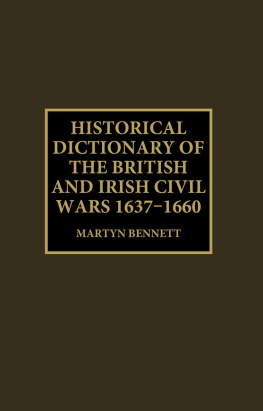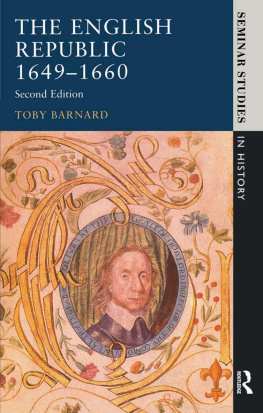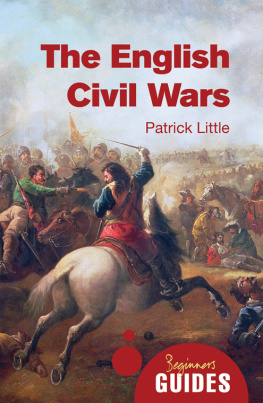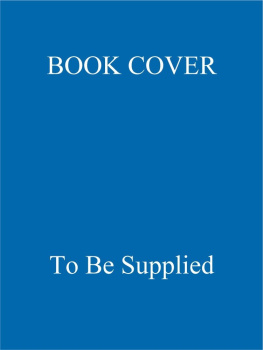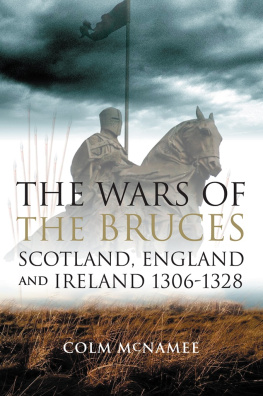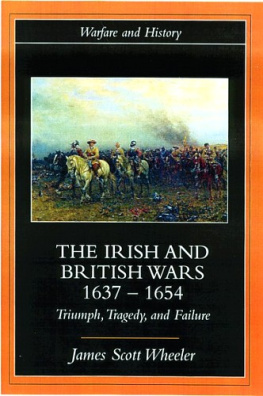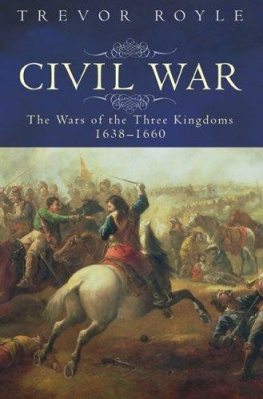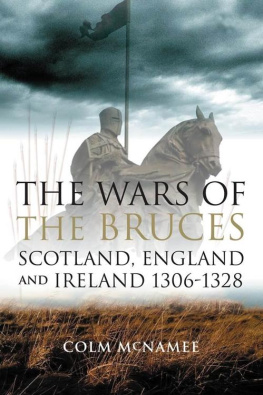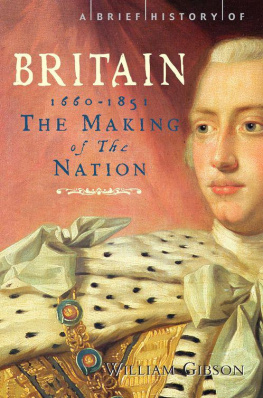HISTORICAL DICTIONARIES OF WAR, REVOLUTION, AND CIVIL UNREST
Edited by Jon Woronoff
1. Afghan Wars, Revolutions, and Insurgencies, by Ludwig W. Adamec. 1996.
2. United StatesMexican War, by Edward H. Moseley and Paul C. Clark, Jr. 1997.
3. World War I, by Ian V. Hogg. 1998.
4. United States Navy, by James M. Morris and Patricia M. Kearns. 1998.
5. United States Marine Corps, by Harry A. Gailey. 1998.
6. Wars of the French Revolution, by Steven T. Ross. 1998.
7. American Revolution, by Terry M. Mays. 1998.
8. The Spanish-American War, by Brad K. Berner. 1998.
9. The Persian Gulf War, by Clayton R. Newell. 1998.
10. The Holocaust, by Jack R. Fischel. 1999.
11. The United States Air Force and Its Antecedents, by Michael Robert Terry. 1999.
12. Civil Wars in Africa, by Guy Arnold. 1999.
13. World War II: The War Against Japan, by Anne Sharp Wells. 1999.
14. British and Irish Civil Wars, by Martyn Bennett. 2000.
HISTORICAL DICTIONARY OF THE BRITISH AND IRISH CIVIL WARS 16371660
MARTYN BENNETT
Historical Dictionaries of War, Revolution, and Civil Unrest, No. 14
First published 2000 by Fitzroy Dearborn Publishers
Published 2013 by Routledge
2 Park Square, Milton Park, Abingdon, Oxon OX14 4RN
711 Third Avenue, New York, NY, 10017, USA
Routledge is an imprint of the Taylor & Francis Group, an informa business
Copyright 2000 by Martyn Bennett
All rights reserved. No part of this publication may be reproduced, stored in a retrieval system, or transmitted in any form or by any means, electronic, mechanical, photocopying, recording, or otherwise, without the prior permission of the publisher.
British Library and Library of Congress Cataloguing-in-Publication Data are Available
ISBN 13: 978-1-579-58253-1 (hbk)
To Deborah Tyler-Bennett
Contents
M ost wars are fairly straightforward. If nothing else, you know who is on opposing sides, the aims of the war are relatively clear, there is a reasonably well-demarcated front, and if nothing else, you know who won. The situation for the British and Irish Civil Wars was not that simple. Those backing each side varied over time, and there was no end to turncoats shifting from side to side. This meant that the aims of the war varied as well, depending on the tides of war, depending also on who fought and directed it. There were regions that opted for one side or another, but even they had pockets of opponents, and counties, villages, and even families were divided. Most oddly, although the parliamentarians surely won the war, not too many years later there was a restoration of the defeated royalists. If that were the end of it, maybe this war would be forgotten. But it was impossible to forget that the people also had rights, that they could impose them on the rulers, that the rulers could be overthrown and even executed.
This Historical Dictionary of the British and Irish Civil Wars provides a guide to this far from straightforward, indeed often extremely complex and confusing period. It covers the run-up to the war and the aftermath; it provides information not only on the military and political aspects, but also the economic, social, and religious consequences. It includes brief entries on a broad array of persons, places, institutions, and military encounters. The chronology is precious in following events; the Introduction puts the entries and events in their context. This guide is not only helpful when reading general works like this, readers should have it on hand when delving into the vast, and growing, literature that is mapped out in the bibliography.
The author of this volume, Martyn Bennett, is one of the leading authorities on the British and Irish Civil Wars. He has taught about the war and the period, first at Loughborough and Leicester Universities, and presently as Reader in History at Nottingham Trent University. He has already written extensively, including several major works, among them The English Civil War, 16401649 (1995) and The Civil Wars of Britain and Ireland, 16381651 (1997). Dr. Bennett has also visited the sites of many battles, to understand them on the ground as well, resulting in Travellers Guide to the Battlefields of the English Civil War (1990). This experience has placed him in an ideal position to write such a guide as this.
JON WORONOFF
Series Editor
I would like to thank my colleagues in the Forward Seventeenth Century Seminar in the History Section of Nottingham Trent University. Their unfailing help and comments enhanced this volume. I also wish to thank the Faculty of Humanities at the university under Dean Professor Stephen Chan for the sabbatical period in 1998, part of which was dedicated to completing the work for this dictionary. Finally, I wish to thank my partner, Dr Deborah Tyler-Bennett, to whom I have dedicated this work, for reading and commenting on the definitions here included.
Map Battles of the Civil War, 16391651.
1637 23 July, Scotland: Riots at St Giles, Edinburgh, as the new prayer book is read for the first time. 18 October, Scotland: Opponents of Charles Is religious policy present the Supplication and Complaint to the king. November to December, Scotland: Opponents of the king form executive bodies, the Tables, to co-ordinate their action.
1638 28 February, Scotland: The National Covenant, binding the Scottish people together in defence of their kirk, is signed for the first time at St Giles, Edinburgh. May, Scotland: Charles Is cousin, the marquis of Hamilton, arrives in Scotland to represent the king. 21 November, Scotland: The meeting of the General Assembly of the kirk that went on to disestablish the episcopate is held.
1639 May, England: Charles I assembles an army to attack Scotland. 4 June, Scotland: A force of English troops led by the earl of Holland retreats after a clash with the Covenanter Army at Kelso. 11 June, Scotland: Negotiations between the Scots and Charles I begin at Berwick. 19 June, Scotland: Anti-Covenanter Scots are defeated at Aberdeen by the earl of Montrose. Negotiations at Berwick are concluded. 12 August, Scotland: Meeting of the General Assembly. 31 August, Scotland: The Estates session opened.
1640 16 March, Ireland: The Dublin Parliament votes four subsidies for Charles I. 13 April, England: Parliament opens. 5 May, England: Charles dissolves Parliament after it refuses to vote him taxes. 1 June, Ireland: A new session of the Parliament begins to question the subsidies voted in March. August, England and Scotland: Forces gather on the borders in preparation for renewed war. 20 August, Scotland and England: The Scots cross the border. 28 August, England: The kings army is defeated at Newburn. Twelve peers petition the king for a new Parliament. 3 November, England: Parliament meets. 11 November, England: Root and Branch Petition is presented to Parliament. The earl of Strafford is arrested. 21 November, England: The Archbishop of Canterbury is arrested.

